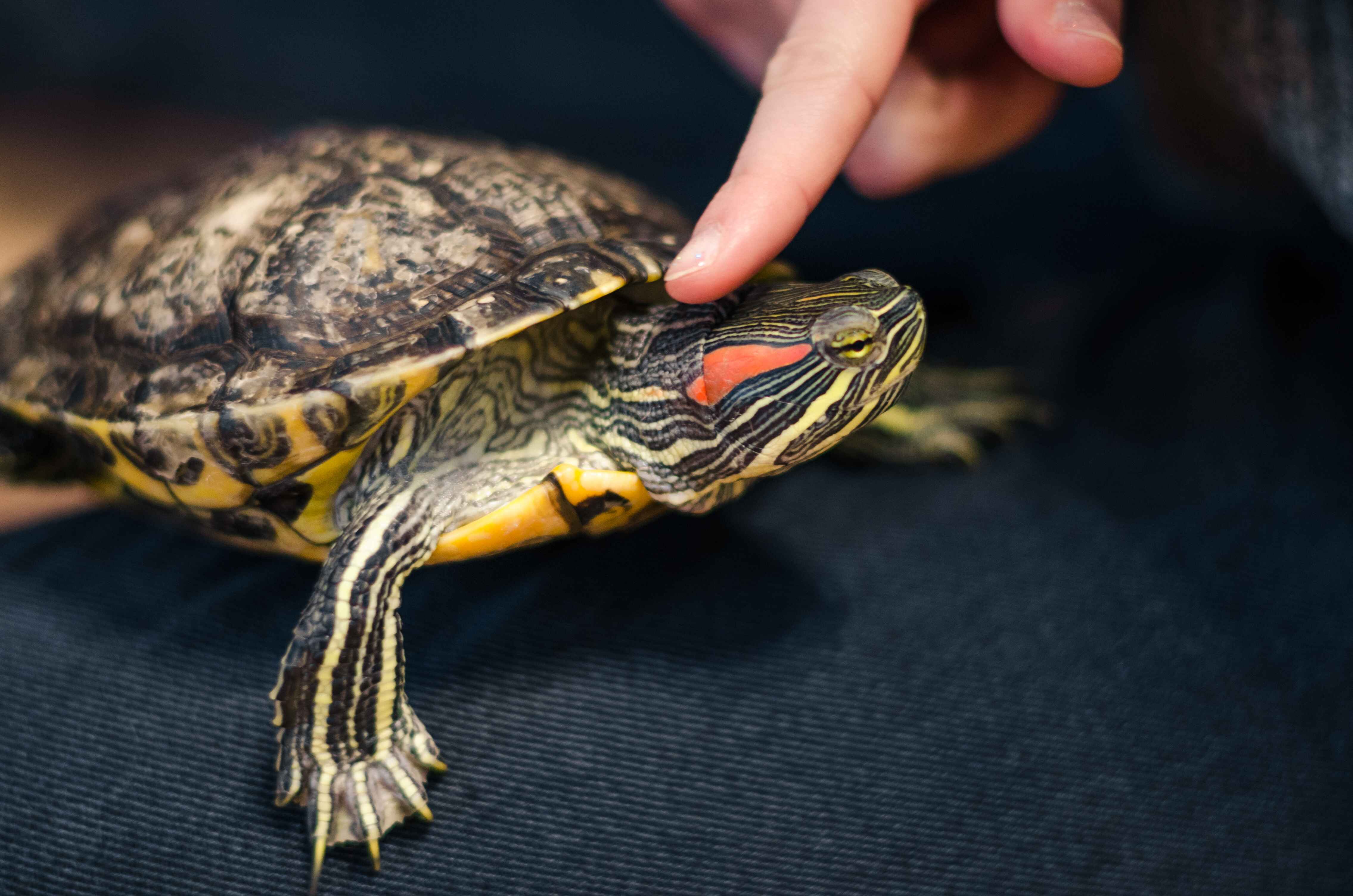Red Eared Slider

Instantly Recognizable
Red-eared sliders are fascinating creatures and one of the most popular breeds of pet turtle thanks to their sociable personality. They are named after the distinctive red marks behind their eyes that resemble ears. They are generally friendly pets that can grow to recognize their owners over time.
The average size of red-eared sliders grow to be between 8-12 inches. In captivity, the red-eared slider can enjoy a lifespan of well over twenty years. In return for a healthy and well-maintained habitat, you’ll get a charming and intelligent companion for years.
Native Habitat
Red-eared sliders are native to North American ponds, rivers, and lakes. They are daytime creatures and love the sun, so you’ll regularly find them basking on logs or rocks when they aren’t enjoying a swim. While sliders bred in captivity may show curiosity to meet you, wild sliders are often more cautious and are likely to retreat into their shells or water when approached.
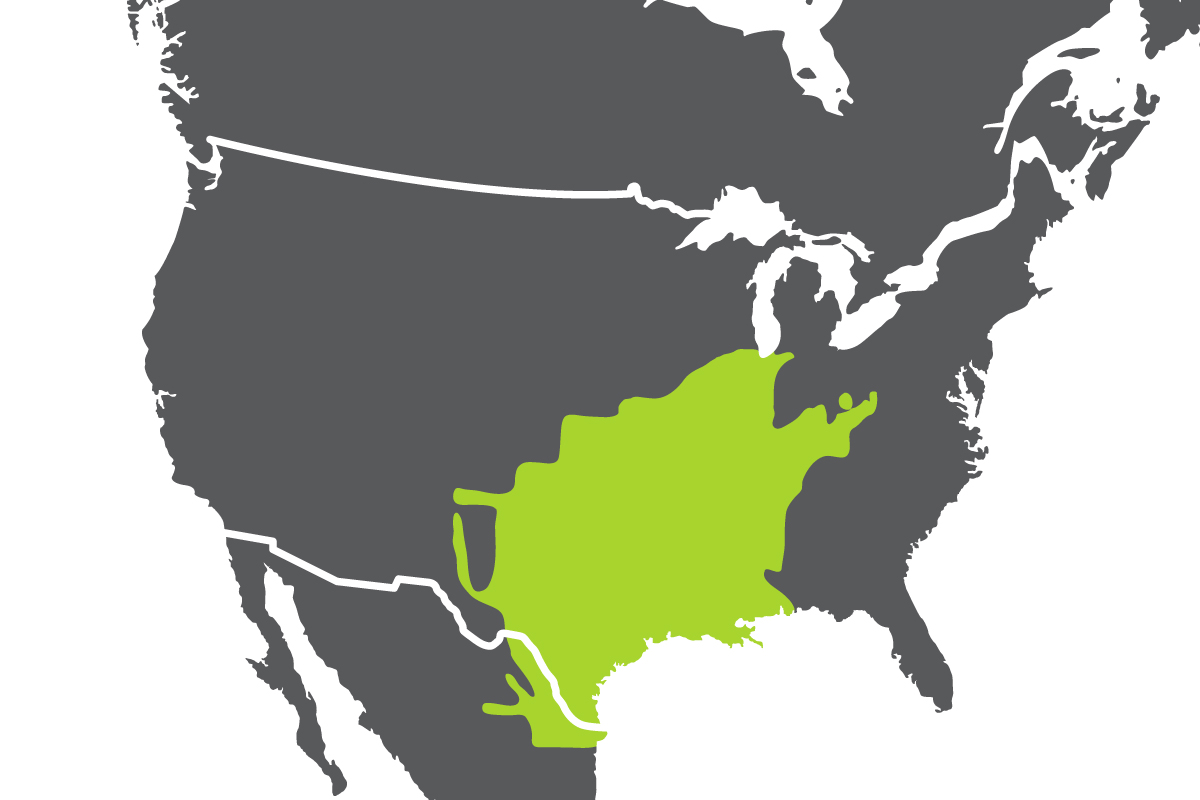
Recommended Housing And Accessories
Red-eared sliders require spacious aquariums. While you can start as small as a 10-gallon tank, know that your turtle will grow to need a larger tank pretty quickly. The Aqueon Standard Glass Terrarium comes in multiple sizes and can be paired with the Zilla Aquatic Turtle Habitat Accessory Kit to cover your essential needs.
Use a good filter like the Aqueon Quietflow® Canister Filter to help with your turtle’s messy eating and waste. Water care products like Zilla Water Conditioner, Zilla Miracle Ball, and Zilla PURE can help you maintain safe and healthy water while significantly reducing time spent on upkeep. Water should be about twice as deep as your turtle is long.
Provide a dry basking area with accessories like the Zilla Freestanding Floating Basking Platform or Zilla Basking Platform Ramp.
Outdoor pens can also be a great option in temperate climates but require careful planning and predator protection.
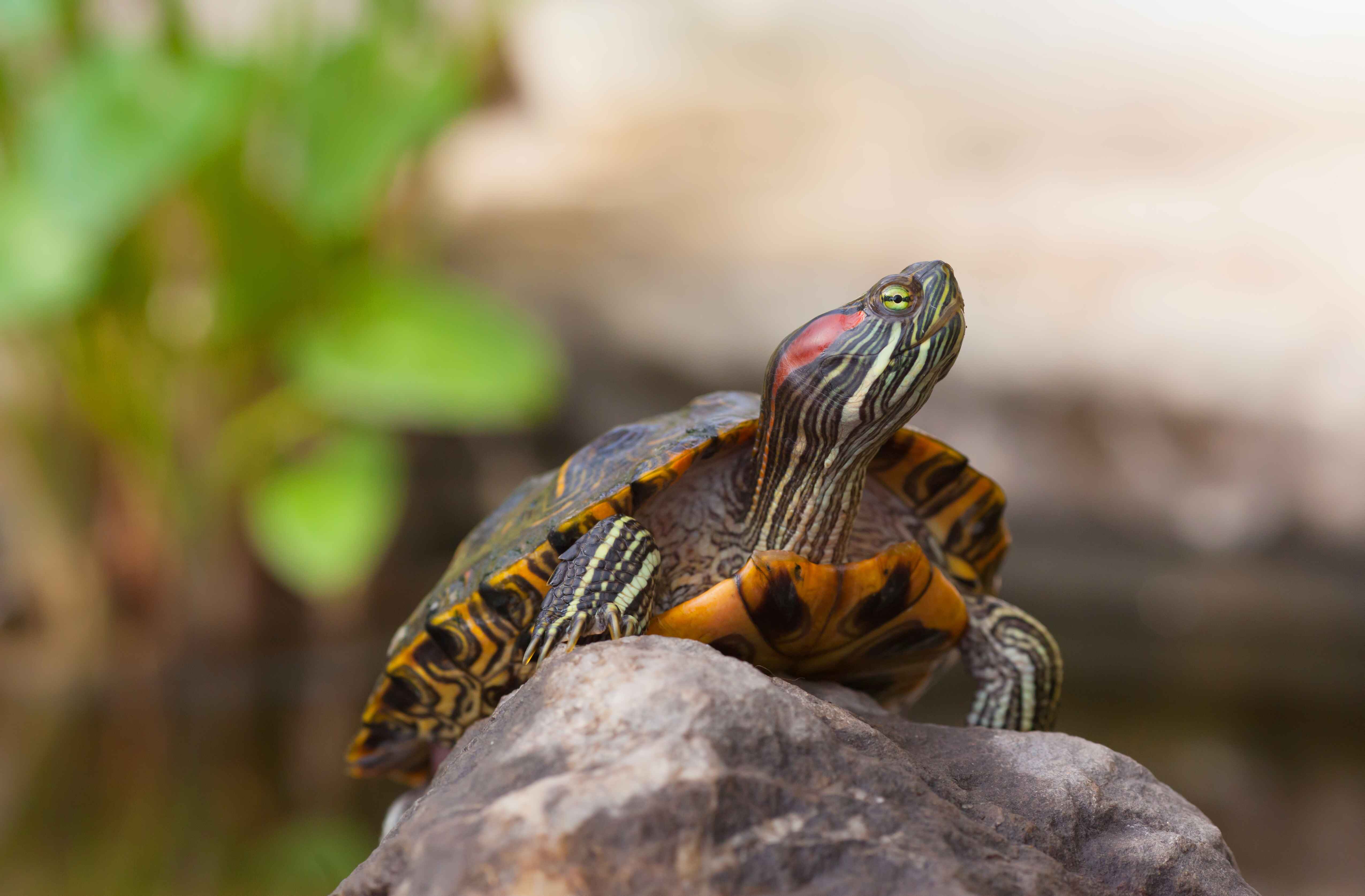
Temperature and Lighting
Red-eared sliders require a thermal gradient in their habitat – a warm side and a cool side. An ideal temperature range is between 75-80°F in water and 85-95°F in the basking area. The gradient can be created with Zilla Incandescent Spot Bulbs or Zilla Mini Halogen Bulbs. You can also use heat emitters like the Zilla Aquatic Reptile Heater to help with consistent overall warmth.
UVA and UVB is a necessity for a healthy turtle. Indoor turtles require UVB lighting and supplemental heat lights for 10-12 hours a day. Make sure to provide access to UVA/UVB on basking platforms using any Zilla Fluorescent UVA/UVB bulb. Remember to replace bulbs every 6 months.
For more information on UV lighting, read Understanding UVA, UVB, and UVC Reptile Lighting.
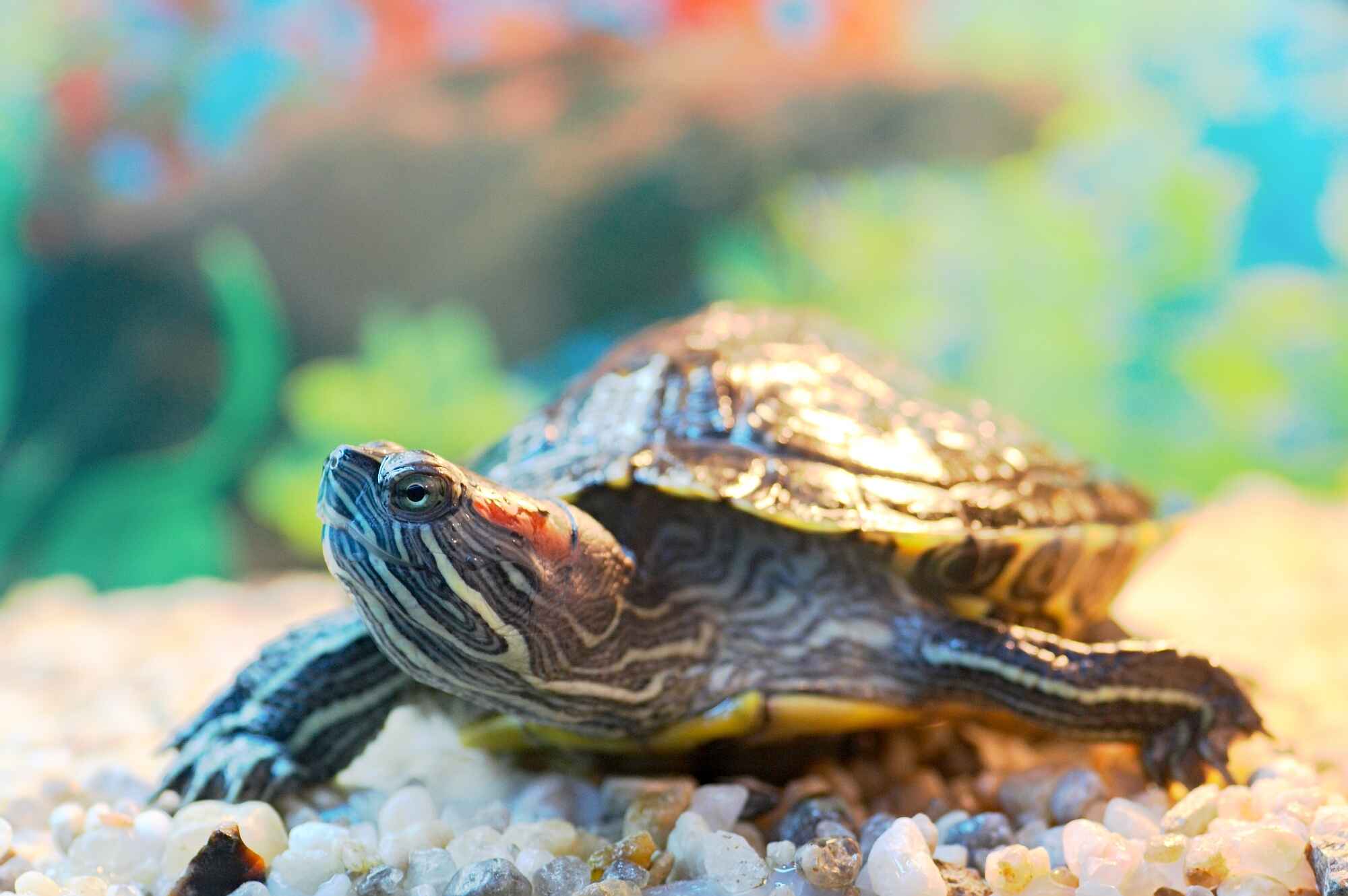
Feeding and Diet
Red-eared sliders are omnivores and often eat while swimming, so floating food is preferred. There are a variety of options made for turtles that will get them excited and give them something to swim after, like Zilla River Shrimp or Turtle Chasers. For complete nutrition in your aquatic turtle’s diet, give Zilla Turtle Sticks a try!
Check the Zilla Feeding Guide for a list of appropriate food options.
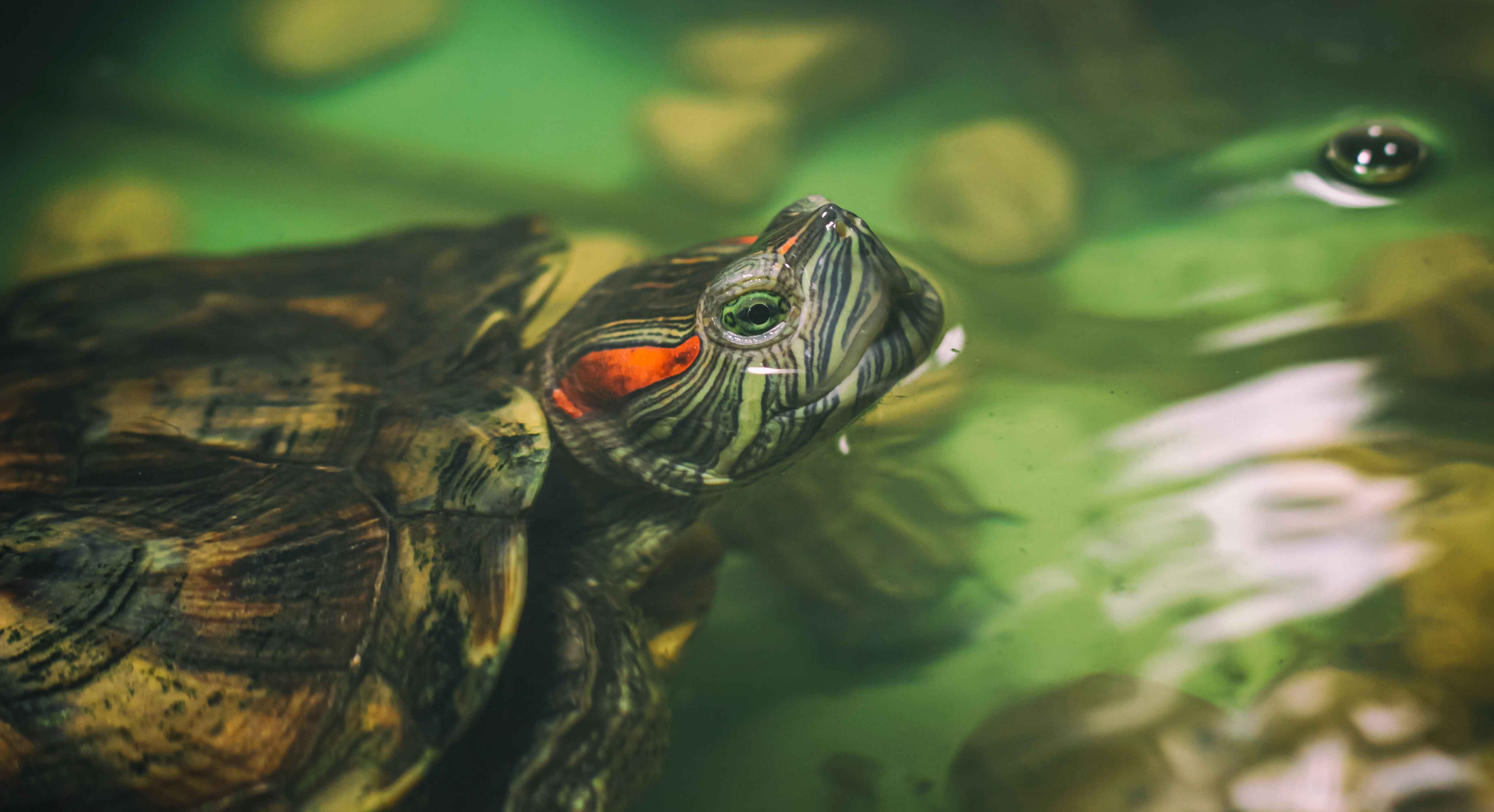
![]()
Handling
While red-eared sliders can become accustomed to handling, it’s important to be gentle. They can get nervous when handled and may bite if stressed, despite their overall friendly demeanor.
